The major problem is, the brake power reduces. A seized brake makes the brake pad or disc damaged and creates stress on the transmission.
Contents
Problems When the Brake is Seized
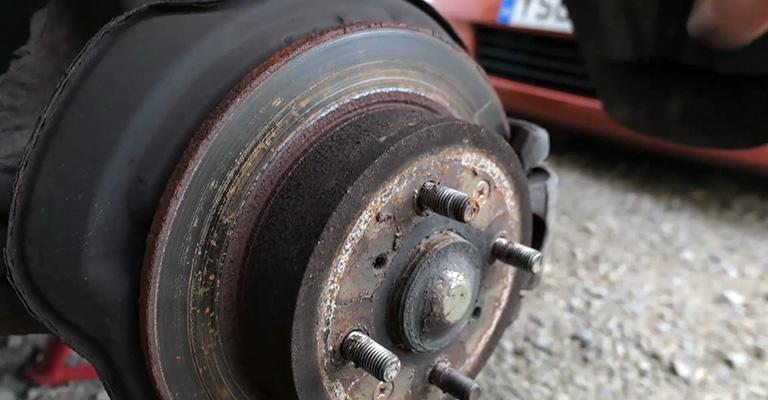
Brake is On
When you will start the car with seized brakes, it will feel like the brake is active and it is stopping you! In the worst cases, the car cannot move at all.
Wrong Side Pulling
If you apply the brake and the brake is seized, your vehicle may turn to the opposite side. It will seem like it is losing all power and the parking brake is working. Sometimes, despite keeping the steering wheel straight, the car will be biased and go to one side.
Start a Fire
If you are traveling with a seized damp brake, there is no guarantee that the car will not cause a fire. It will generate so much heat and may damage the discs, wheels, and other components. The brake fluid reservoir can be leaked too.
Disturbing Sound
For these worn brake/brake pads, there is less friction between brake pads, and the disc is created. And so, you will get a disturbing grinding sound when you press the brake.
Low Efficiency
Your car needs to work a little bit more to increase the speed and overall efficiency if it bears a seized brake. So, it will use more fuel to get acceleration.
Horrible Brake Behavior
While driving, while taking the foot up, the brake pedal will not come smoothly. That is another reason for a faulty seized brake pad.
Main Causes of Brake Seizing?
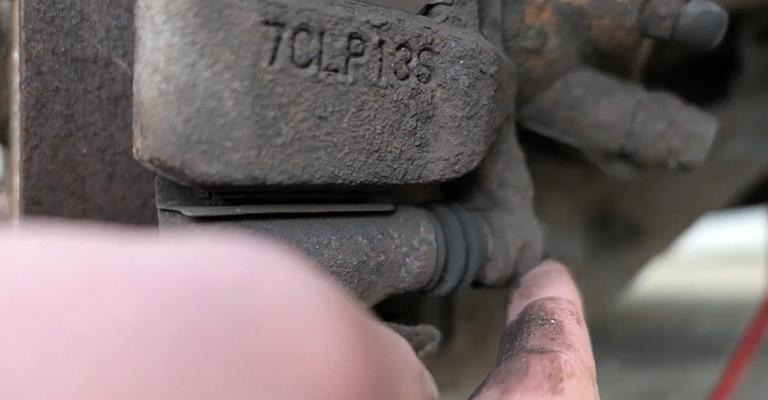
Inactivity
This is the main reason. For keeping the car idle for months by parking it outside, brakes get affected with corrosion and become seized. Similarly brake discs with corrosion.
High Temperature
Because of a high temperature, brakes start exposing. So, the corrosion arrives and makes the brake faulty.
Brake fluid with Water
Many of the brake fluids absorb water. So, moisture occurs on brake pads and makes them damaged. A similar case happens when you sit the car in a damp place/environment.
Other Reasons
Similarly, brake discs/caliper piston with corrosion stuck with the brake. Thus, the way the brake becomes affected.
Binding Brakes Symptoms
We have found here five major symptoms of a binding brake.
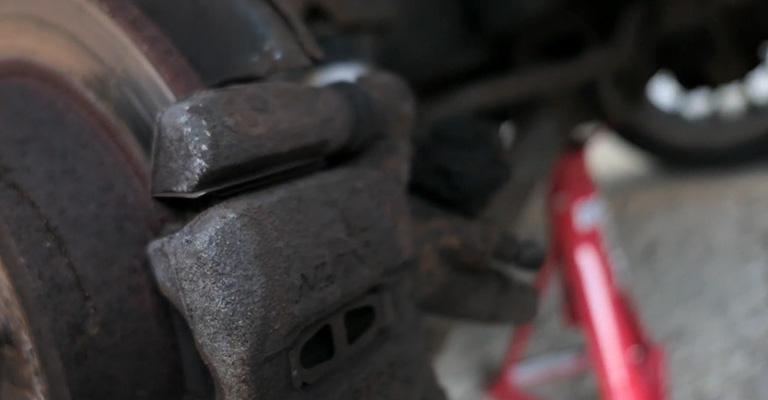
Fluid Leaking
Brakes generally operate using the pressure from the brake fluid. So, if you find fluid is leaking under the vehicles/wheels while slowing the car, then you may have a binding/sticking brake. This problem can lead you to use more effort to stop the car.
Turning to One Side
For a binding brake, the car pulls itself too right or too left. It is one of the major signs of a binding brake.
Brake Pedal Doesn’t Respond
After taking the foot off, a normal brake pedal comes back up instantly. But if your brake doesn’t come out with the foot taking of it, then your brake may be binding.
Annoying Sounds
When you push the brake, you will hear a high-pitched sound. This means that you have faults with the brake.
Burnt Smells
A binding brake will release a smoking or acid-burning smell and a huge amount of heat.
Seized Brake Caliper Symptoms
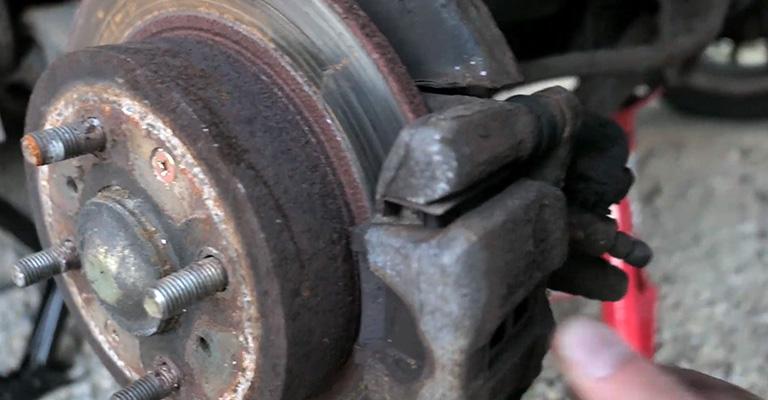
Decreased Braking Power
Because of having a seized brake caliper, the brake pedal becomes soft. Thus, the brake power decreases.
Unexpected Braking
You have got a faulty brake caliper. And now, you will feel it is pressing the pads while running the car. So, you will face a dragging sensation.
Brakes Become Spongy
Broken brake calipers make the brakes weak and spongy. So, their extra clearance between the rotor and pad is created and it gives you a strange pedal feel.
Other Signs
The many other signs are abnormal sounds from the brake, leaking of brake fluid, turning of the vehicle to one side.
How to Fix Locked Up Brakes
First, inspect the actual reason for making the brakes locked up. Here the most common reasons are described. Find yours and see how to fix it.
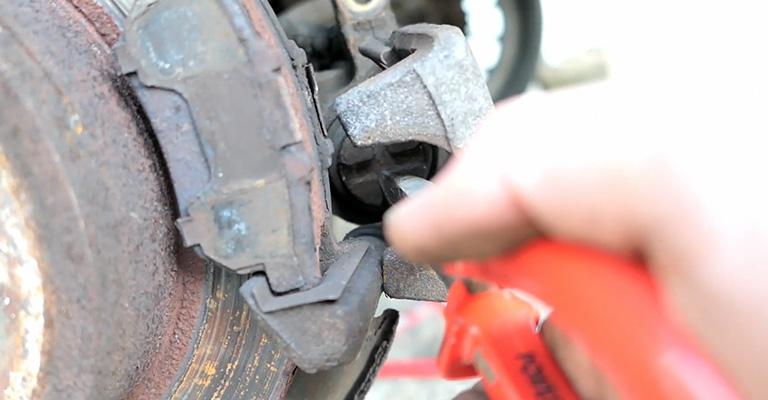
If the Brake Lines Are Damaged
Sometimes the brakes lock-up because of the damaged brake lines. So, immediately replace them. Use a quality brake fluid.
For Sticky Brake Pads
Fixing a faulty brake pad is quite difficult. Lift the wheel of the affected brake, take the caliper using the right socket, separate the caliper and brake pads. Now, clean that pad using a brake cleaner. If there is damage, repair using brake caliper tools and taking help from an expert. It is better to replace it.
For Broken Master Cylinder
Bring a recommended cylinder, replace it with new brake fluid, bleed the brakes.
Solving these problems can save the brakes from being locked up.
Brakes Sticking While Driving
Reasons
- No friction between the brake pads and brake disc.
- The seized caliper/brake pad.
- Broken brake fluid cylinders.
- Defective caliper pistons.
How to Solve?
Follow these quick actions.
Step: 1
Take the wheel off, go to the caliper, loosen the bleeder to let the pressure off the system. Once you have relieved the pressure on the system, the master cylinder will not stick the brakes. Thus, the wheel will rotate freely.
Step: 2
If the calipers are defective, just remove them and put a new one. Simply unbolt the two bolts that are holding the caliper on, pull the caliper off, then slide the new caliper, tighten the two bolts again.
Step: 3
Don’t forget to bleed the brakes out. Open the bleeder up while someone steps on the brake. Then tighten the bleeder valve again. Do this process four to five times till the full air comes out.
How to Unseize a Brake Caliper
Step: 1
If the problem is created for parking brake failure or skewed brake pads, lubricate the parking brake, remove the pads, put a little grease to the edge of the pads.
Step: 2
Watch the other instruments like pistons/seals and ensure that these are not hung up. If the pads are sticking to the rotor disc, change the pads and clean the disc surface.
Step: 3
And if the issue is for the seized caliper piston, take the c-clamp to withdraw the pad. There is another path to get the piston caliper out; firstly, eliminate your caliper from the disc, pump the pedal and move the piston. Then you will easily get it out and replace it.
How to move a Car with Seized Brakes
If your brakes are seized, there are emergency brakes. Suppose, your emergency brakes are engaged or not activated, you can easily run the car on the front wheels and put it in the park. But before driving, investigate if there is any problem with the brakes.
FAQ
Q: For how long can I use a single brake?
Ans: Brakes need to be changed after nearly 50000 miles. For the low-quality brakes, the amount maybe 25000 miles.
Q: What is the legal limit for brake pads?
Ans: The legal limit in the UK is 1.5 mm.
Conclusion
Here you will get the signs of a seized brake, ways to solve it at a low cost. Besides, we have collected here all solutions of a binding brake, what to do with a seized brake caliper or how to run with a faulty brake.
